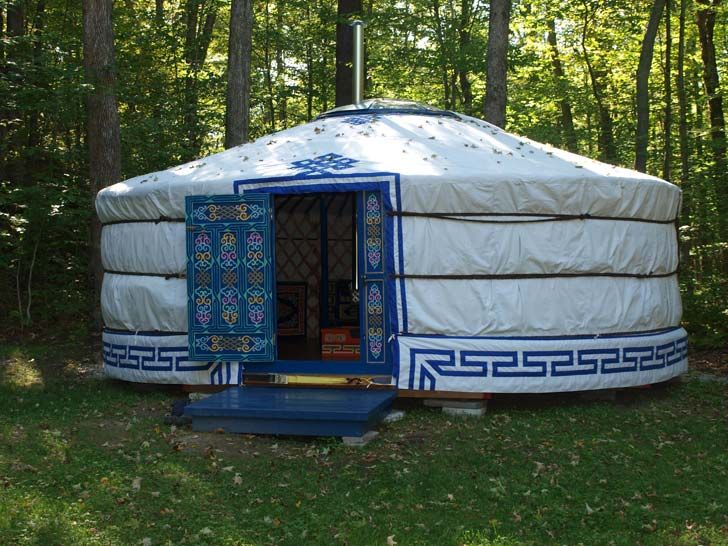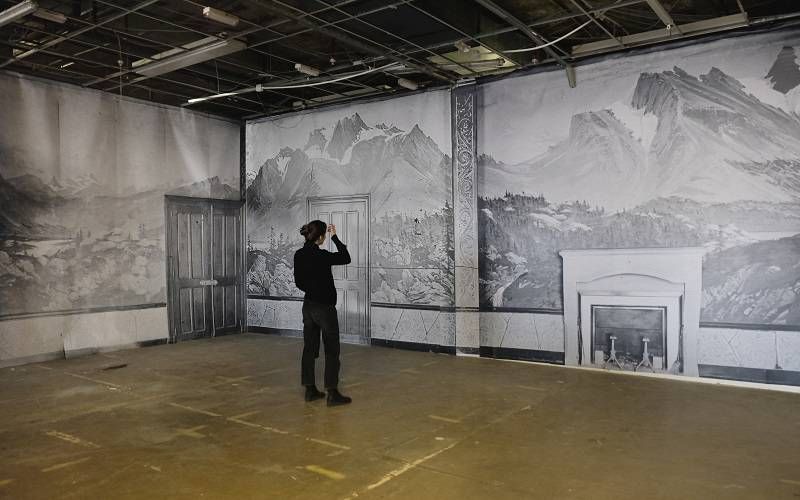There is more to architecture than concrete buildings with foundations. Constructions might have been born from the need for protection, but architecture is more than just that. It is also about sensory experience, scenery, networks, connectivity, ideas, and culture. There are certain skills an architect must have to deliver such experiences through static objects, but what if their creations were dynamic? Moreover, what if architecture traveled with us, offering us the protection we need while becoming an active part of our life? These questions might seem novel, especially for our contemporary lifestyle, but they are most certainly not – mobile architecture is giving us the chance to travel with our homes!
Nomadic peoples have been embracing a different type of lifestyle for ages – one that also includes traveling architecture and culture. It is only normal that such communities adopt temporary shelters, that are easy to dismantle and transport. It has a lot to do with functionality but also finding a way to pass on their culture in a physical form. In such cases, traveling is a necessity. It is not about “leaving your comfort zone”, or the adventures of life, at the edge – although these are part of the package. As our culture and scientific knowledge evolved, populations grew stronger and the need to travel faded. Very few communities or tribes remain nomadic. In the present day, travel is not something the majority of the population does out of necessity, but out of pleasure – this is, of course, the case for stable, developed regions of the globe.
People see traveling as an opportunity for adventure. It has been so ever since comfort and stability became part of their everyday lives. Historically, this change coincides with the Romantic period (1800-1850), which followed the Age of Enlightenment and the Industrial Revolution. This was the moment the rich – guarded by the safety of high society – decided to “escape”, to see the world and experience new adventures. Depictions appear in art and literature. German painter Caspar David Friedrich captures the lust for the unknown in his dramatic paintings of wild landscapes, while English writer Jerome K. Jerome opts for a more satirical portrayal, in his books “Three Men in a Boat” and “Three Men on Two Bicycles”.
In architectural history, this is the time of William Morris and John Ruskin, the two famous English architects, decorators, and restorers. Ruskin’s fascination with ruins and history led him to Venice and the ancient sites of Italy. His French counterpart, Eugène Viollet-le-Duc – notable architect and theorist, famous for his restoration of medieval buildings – shared the same interests. Travel played an important role for both. Throughout their journeys, the two men were inspired by the cultural heritage of other countries. Their architecture, as well as natural landscape, were reference points – especially for Ruskin.
The education that comes with travelling continued to be acknowledged by other notable architects during the 20th century, such as Mies van der Rohe, or Le Corbusier who traveled throughout his beginnings. The benefits of traveling can never be underestimated. It is a powerful learning tool that continues to be encouraged in universities around the world – and not just in architecture ones. There are scholarships and exchange programs worldwide that help students and young professionals experience different cultures and lifestyles, with the goal of creating a more tolerant and interconnected world. And the results are quick to come. Whoever experienced living abroad is familiar with the “travel bug” or the constant urge to visit new places and learn about other cultures.
To an extent, travel also ensures freedom – and what other better statement is there than Jack Kerouac’s “On The Road”? The iconic novel from 1957 captures the essence of the beat generation and pre-hippie American culture. How was architecture depicted here? The characters had no permanent shelter, no permanent home. Their “home” consisted of buses and cars. The car was their home-on-wheels, their “traveling architecture” – just like the boat was a “floating architecture” in Jerome K. Jerome’s “Three Men In a Boat”.
More and more people opt for a life “on the road”. They abandon the comfort of their home or apartment and decide to live in floating homes, boats, RVs or even planes. These homes have no foundations and can be simply relocated. They are a reflection of the alternative lifestyle they chose.
So, how is architecture adapting to the traveling lifestyle? The answer might include simplicity, resourcefulness, space maximization, adaptability and lightness. There are a lot of examples of such architectures – from minimal homes on wheels, to luxury floating houses. Across the world, there are communities of people living in such spaces, adopting a new approach to life – one that brings them closer to nature. It is up to architects to find a way of incorporating the sensory experience into new homes for those who prefer a more classical lifestyle, or, perhaps, create a new type of architectural program: the traveling home.
By: Ana Cosma





